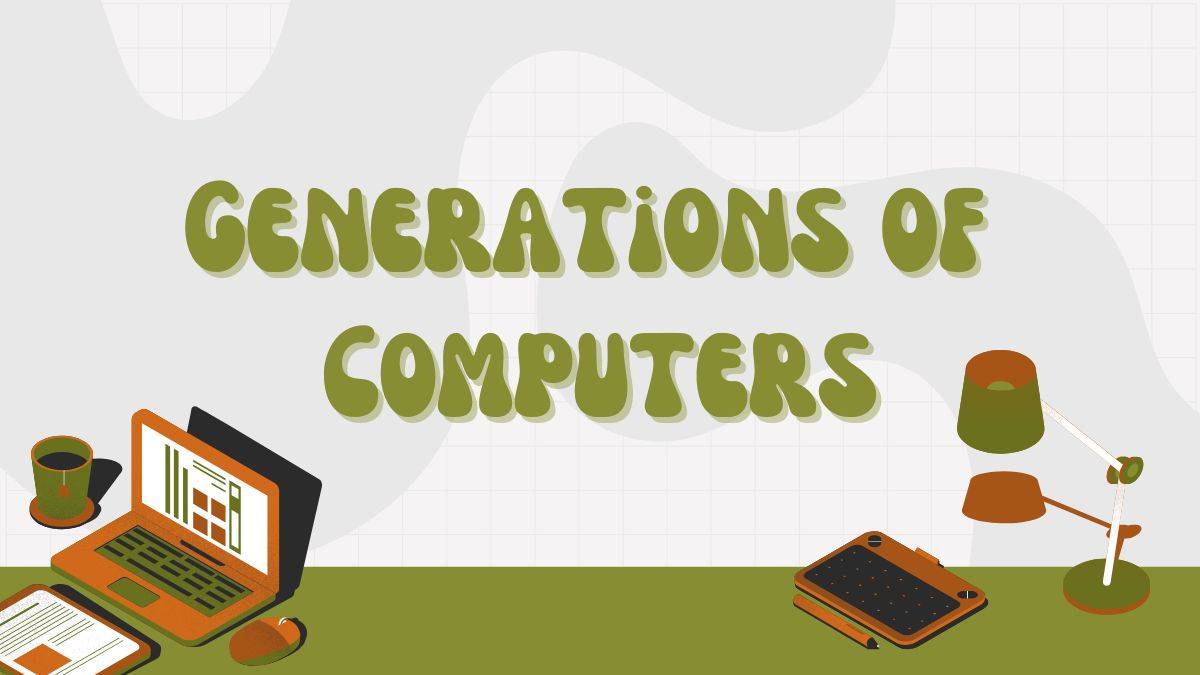Evolution of the Different Generations of Computers
Computers have been through significant changes since their introduction in the 1940s. At present, we are living in the era of the fifth generation of computers and are looking forward to the introduction of the sixth generation anytime soon. The most remarkable developments in the world of computer generations depended on their speed, memory, size, and ease of use. To learn more about the evolution of generations of computers, check out this blog.
- First Generation of Computers (1946 - 1959)
- Second Generation of Computers (1956-1963)
- Third Generation of Computers (1964 - 1971)
- Fourth Generation of Computers (1971-1980)
- Fifth Generation of Computers (1980 - Present Day)
First Generation of Computers (1946 - 1959)
The first generation used vacuum tube technology and was built between 1946 and 1959. Vacuum tubes were expensive and produced a lot of heat, which made these computers very expensive and only affordable to large organizations. Machine language was the programming language used for these computers, and they could not multitask.
The ENIAC was the first electronic general-purpose computer, using 18,000 vacuum tubes and built in 1943 for war-related calculations. Examples of the first generation include EDVAC, IBM 650, IBM 701, Manchester Mark 1, Mark 2, etc.
Advantages & Disadvantages of First-Generation Computers
Advantages
- Faster than mechanical computers
- Solved simple calculations electronically
Disadvantages
- Very large in size and occupied entire rooms
- Consumed a lot of electricity
- Produced a lot of heat and usually failed
- Very expensive to build and maintain
Second Generation of Computers (1956-1963)
Advantages & Disadvantages of Second-Generation Computers
Advantages
- Smaller and faster compared with vacuum tube computers
- More reliable and energy-efficient
- Easier to maintain and operate
- More commercially available to businesses
Disadvantages
- Generated heat
- Expensive for common users
- Used machine and assembly language, making it hard to program
- Limited multitasking
Third Generation of Computers (1964 - 1971)
Fourth Generation of Computers (1971-1980)
Fifth Generation of Computers (1980 - Present Day)
The fifth generation of computers appeared after the fourth one and remains in development up to now. Computers of the fifth generation are based on AI technologies for performing any operation. The input method for these computers includes programming languages: Python, R, C#, Java. This generation of computers uses ULSI technology, parallel processing, and AI for scientific computation and AI software development. They are capable of doing complex operations like image recognition, interpretation of speech, and understanding of natural languages. The devices included in the fifth generation include laptops, desktops, notebooks, and Chromebooks.
Advantages & Disadvantages of Fifth-Generation Computers
Advantages
- Uses AI and machine learning for smart computing
- Faster processing and handling of large data
- Supports natural language and expert systems
- Highly portable, user-friendly
Disadvantages
- Very high development cost
- Can cause unemployment due to automation
- Risk of misuse or bias in AI decisions
- Requires high computational power and data











Name: Rashmi Karan
Education: M.Sc. Biotechnology
Expertise: IT & Software Entrance Exams
Rashmi Karan is a Postgraduate in Biotechnology with over 15 years of experience in content writing and editing. She speciali
Read Full Bio